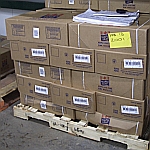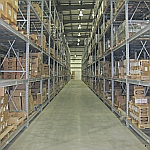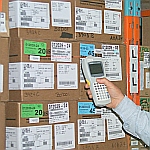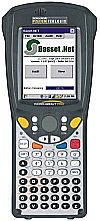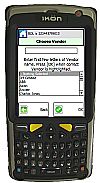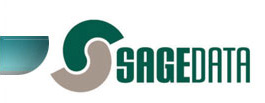Introduction
This page is written for the benefit of those who are responsible for managing some form of physical inventory, and who are considering upgrading their existing systems. It addresses issues to be considered in determining what needs to be managed, and in identifying the characteristics of an effective inventory management system. The target audience ranges from those managing "a large stock cupboard", to those managing inventories valued at many millions of dollars.
Definition
"Inventory Management" is a general term that has many interpretations based on context. In this note we use it to mean the process of managing physical "stuff".
Typical inventories to be managed include:
- IT equipment - laptops, workstations, servers and network equipment.
- Materials for manufacturing - nuts, bolts, screws and washers.
- Mechanical equipment - heating, ventilation, air conditioning, sewage treatment.
- Fire prevention equipment - extinguishers, hoses, hydrants
- 'Street furniture' - crash barriers, traffic signs
- Items in a warehouse, managed as a third part logistics operation.
In all of these cases there is a common cycle of functions: perform some action on the inventory, accurately capture information on that action, analyze and review the total information set applying to the inventory, and determine what action to take next.
Actions on the Inventory
Actions taken on the inventory follow some or all of the following steps...
The core functions are very simple.
- Receive, put-away, pick and ship.
A slightly more complete list would include
- Order, receive, put away, pick, ship, re-order, audit.
Expanding still further, we might get to...
- Order, receive, inspect, put away, move, inventory check, inspect, pick, issue or ship, return, dispose, identify dead stock, generate financial reports, prepare performance reports, measure stock-out performance, optimize for carrying costs.
When considering how to manage most of the above functions, the task can be considered as two discrete steps - data collection and data analysis.
Key decisions.
Perhaps the most fundamental decision is that of whether to employ item level tracking. Items can be tracked with two strategies, and each has its strengths and weaknesses. The difference can perhaps best be illustrated by comparing a video rental store with a supermarket.
In the video store, there are perhaps twelve copies of the movie Titanic. Each has a barcode, and that barcode is a UIC - a Unique Identification Code. The barcode not only identifies WHAT the item is - the movie Titanic, but it also identifies WHICH specific copy is being scanned. This means that when you return the movie, the system can identify you as the renter, and remove it from your account.
In the supermarket, there are perhaps twelve cans of baked beans. They too, carry a barcode, but this is a SKU (Short for Stock Keeping Unit). The SKU tells you WHAT the item is - an eight ounce can of baked beans - but it does not tell you WHICH individual item has been scanned. To the system all cans of baked beans look the same.
Paper based systems tended to lean toward SKU based accounting, as this was far easier and quicker. But with modern systems, and Auto ID capability (barcodes or RFID), UIC tracking is often faster, and significantly more efficient.
Objectives.
When designing or selecting an inventory management system, the objectives must be defined, and these vary from system to system. In some cases, inventory costs are the prime concern. In others, the objective is to avoid a stock-out situation. FIFO (first in first out) can be a big concern. The ability to pick complex orders quickly and efficiently can be the prime concern in other cases. Compliance, and proof of compliance is increasingly a driver. Each of these objectives will require a different approach, both to data collection and definition of the four key processes.
Analysis and Reporting
All processes evolve with time. In inventory management, this can be because of changing product, changing requirements, changing financial rules, or changing business plans and management objectives. The key in all cases is to have a firm understanding of the current process, so that improvements can be planned and executed effectively. Timely reporting can also significantly benefit day to day operations, especially when access to key information is enabled widely within an organisation, or even outside to clients, even the general public where appropriate.
Conclusion
In this note our objective was to give you, the reader, an introduction to the topic of inventory management. Please feel free to browse the rest of this site. The "Learning Centre" section is intended to provide generic information on Inventory Management and associated disciplines. Other sections of this site provide information on the products and solutions offered by SageData, as well as some information on specific systems that we have designed and implemented.
If you would like further and more detailed information on your specific application, please feel free to call or email with your questions. One of our Inventory Management Experts will be pleased to help you. Enjoy.
For more information...
SageData is based in Ottawa, Ontario, Canada.
We design systems around RFID, Barcodes and Handheld computers.
For further information, contact Doreen Wallace or Keith Jackson.
To reach us by email, click here.
To reach us by phone from Ottawa, dial 613 225 4404
To reach us by phone from outside Ottawa, dial 1-888-838-1067
(c) SageData . Ottawa . Ontario . Canada
QA OK DW 1203200915

